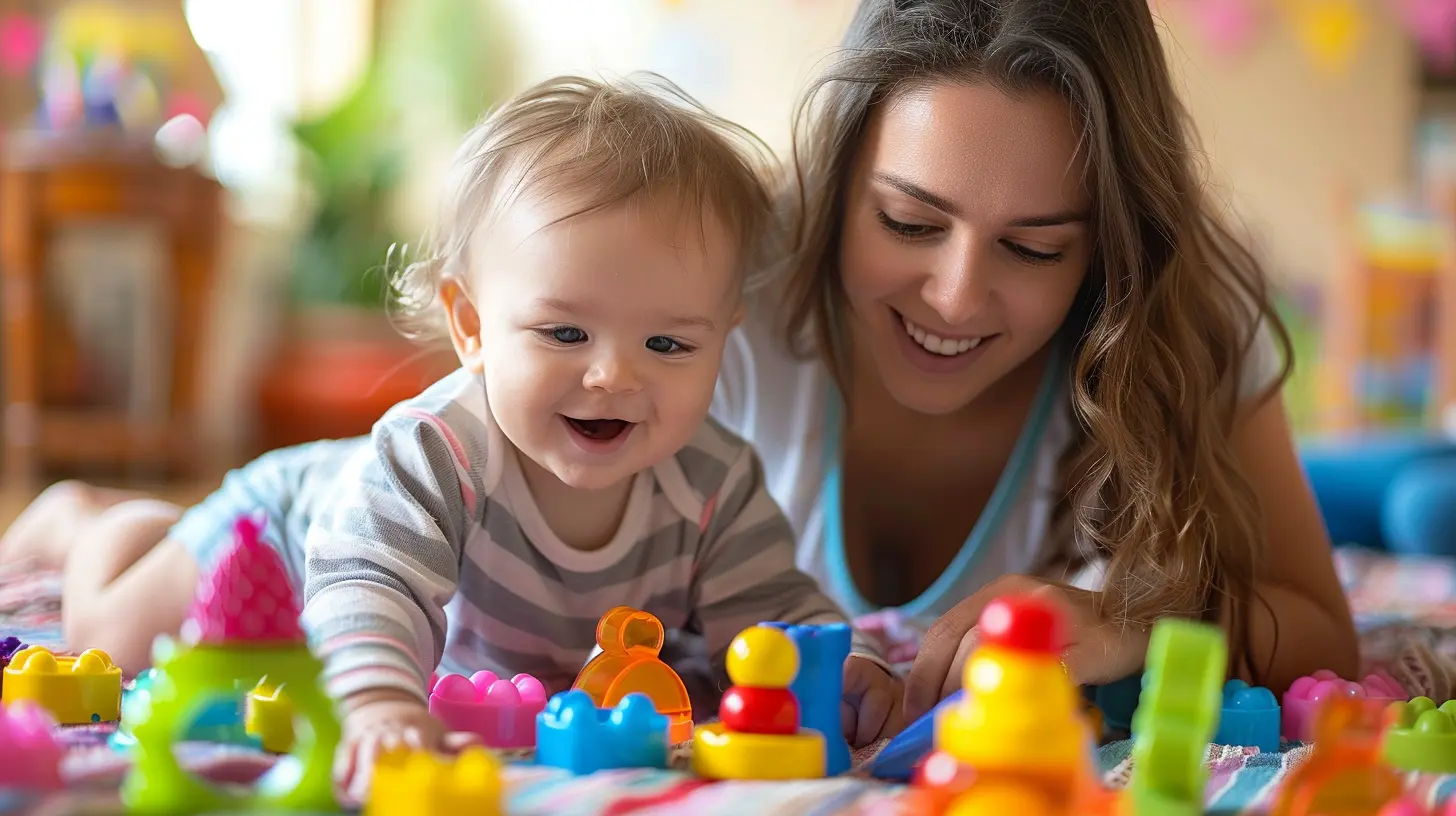From Cooing to Babbling: The Stages of Baby Speech
25 August 2025
Watching your baby grow and develop is one of the most incredible experiences of parenthood. One of the biggest milestones? Their first words. But before your little one starts calling you "mama" or "dada," they go through several stages of speech development—starting with adorable coos and progressing to enthusiastic babbling.
If you’ve ever wondered how babies learn to talk and what each stage means, you’re in the right place! Let’s break it down step by step.

The Foundations of Baby Speech
Before we dive into the stages, let’s address an important question: How does language development even begin?Believe it or not, your baby starts learning language before birth! While in the womb, they listen to your voice, recognize familiar sounds, and even respond to the rhythm of speech. Once they enter the world, the real magic begins.
Speech development isn't just about saying words—it involves listening, understanding, and eventually forming sounds that turn into meaningful communication. And just like walking, talking follows a natural progression.

The Stages of Baby Speech
Now, let’s take a closer look at the fascinating journey from cooing to babbling and beyond.1. The Reflexive Stage (0-2 Months) – Sounds Without Meaning
In the first few weeks of life, newborns mostly communicate through cries and grunts. At this stage, they aren't intentionally trying to "talk"—they're simply responding to hunger, discomfort, or a need for attention. These sounds come naturally and are more of a survival mechanism than an attempt at communication.However, even though it seems like just crying, babies are already learning about tone and pitch. They start recognizing the differences in sounds around them, especially their parents’ voices.
2. The Cooing Stage (6-8 Weeks) – The First Happy Sounds
Somewhere around six to eight weeks, you'll start hearing those heart-melting cooing sounds—soft, vowel-like noises such as "oooh" and "ahhh." This marks the beginning of your baby’s intentional vocalization.Cooing is a sign that your baby is practicing using their vocal cords. They often coo in response to familiar voices, especially when they feel happy and secure. It’s their way of saying, “I like talking to you!”
At this stage, talking to your baby frequently and mimicking their coos is a great way to encourage communication. The more they hear you, the more they’ll want to respond!
3. The Babbling Stage (4-6 Months) – A Symphony of Sounds
Get ready—this is when things start getting noisy! Between four to six months, babies begin what’s known as babbling, where they combine consonant and vowel sounds like "ba-ba" or "da-da."Unlike cooing, babbling involves more control over the mouth and tongue. Your baby is actively experimenting with sounds, testing different pitches, and even mimicking speech rhythms. You might notice them "talking" to their toys, responding to your voice, or simply babbling away to entertain themselves.
At this point, they’re not saying real words, but they’re laying the foundation for language. The more you talk to them, the more they absorb.
4. The Advanced Babbling Stage (6-9 Months) – Sounds Become More Complex
Now, it starts getting even more exciting! By six to nine months, babies begin making variegated babbling—mixing different sounds together, like "ba-da-ma" or "goo-ga."They also start using intonation, meaning their babbling might sound like real speech, even though they're not saying actual words yet. You’ll notice their tone rising and falling as if they’re asking a question or making a statement.
This is also when babies begin to understand turn-taking in conversations—if you "talk" to them, they may pause and wait before responding with babbles of their own. It’s their way of learning the rhythm of communication!
5. The First Words Stage (9-12 Months) – Meaningful Speech Begins
Around their first birthday, many babies start saying their first real words—usually simple and familiar ones like "mama," "dada," "ball," or "bye-bye."But here's the interesting part: Even if they’re saying these words, they might not always fully understand them yet. Sometimes, "dada" means "dad," and sometimes it just means "something exciting."
At this stage, babies also start associating words with objects and actions. If you point to the family pet and say "dog," they might start recognizing the word and reacting accordingly. Their comprehension grows before their ability to form words, so they understand much more than they can say.
6. The Word Explosion (12-18 Months) – Rapid Growth in Language Skills
Once your baby has a few words under their belt, they enter what’s called the "word explosion." Suddenly, their vocabulary starts expanding, and they begin learning new words at an astonishing rate.They might not pronounce them perfectly, but they try! For example, "bottle" might come out as "ba-ta" or "milk" as "mih." These adorable mispronunciations are part of the learning process.
At this stage, babies also start combining words. Instead of just saying "dog," they might say "big dog" or "my toy." They’re learning how to express themselves in more complex ways, and it’s a thrilling time to witness.

How to Encourage Your Baby’s Speech Development
Now that you know the stages, how can you help your baby along the way? Here are a few simple but effective tips:- Talk to your baby often. Describe what you're doing, name objects, and engage in conversations—even if they can’t answer yet.
- Read together. Books with simple, repetitive phrases help babies recognize patterns in speech.
- Sing songs and nursery rhymes. Music helps reinforce sounds and rhythm in speech.
- Respond to their babbling. If they say "ba-ba," respond with enthusiasm to encourage their efforts.
- Avoid too much screen time. Babies learn best from face-to-face interactions, not from videos or apps.

When Should You Be Concerned?
Every baby develops at their own pace, but if your child isn’t showing signs of vocalization by six months or isn’t attempting words by 12-15 months, it’s worth discussing with a pediatrician. Early intervention can be beneficial if there is a delay in speech development.Final Thoughts
From those first adorable coos to the exciting babbling stage and the magic of the first real words, speech development is an amazing journey. Every sound, giggle, and attempt at conversation is a sign that your baby is learning and growing.So, keep talking, keep listening, and cherish every little sound along the way—because before you know it, you’ll be having full-blown conversations with your tiny chatterbox!
all images in this post were generated using AI tools
Category:
Infant DevelopmentAuthor:

Maya Underwood
Discussion
rate this article
1 comments
Zephyros Rodriguez
This article beautifully highlights the crucial stages of baby speech development, emphasizing the importance of interaction in fostering language skills. Great insights!
September 8, 2025 at 4:05 PM

Maya Underwood
Thank you for your kind words! I'm glad you found the insights on baby speech development valuable.


